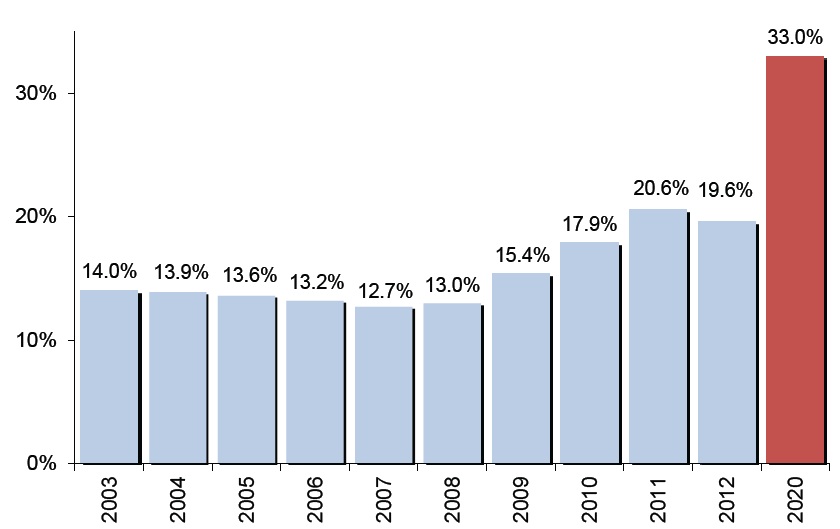California’s landmark renewable energy policy, the Renewables Portfolio Standard (RPS), establishes a clear blueprint for clean energy investment in the short-run: by 2020, all utilities are required to source 33 percent of their retail electricity sales from renewables. The big question now is what happens after that? What role should renewables play in California’s long-term goal to reduce greenhouse gas emissions 80 percent below 1990 levels by 2050?
As the graph shows, California is already supplying about 20 percent of its electricity needs with renewable energy sources, and we are on track to reach the 33 percent benchmark, possibly even before the 2020 deadline.

California’s to-date progress on the RPS. Source: California Public Utilities Commission
Is the RPS the right mechanism for increasing renewables beyond 2020?
A new report jointly produced by UC Berkeley and UCLA explores policy options for creating a clean energy blueprint that takes us through 2030. The report focuses on raising the RPS to a minimum of 51 percent by 203o and describes policy design options that could help maximize greenhouse gas reductions and capture more of the local benefits created by distributed generation projects.
The recommendations in the report mirror comments that UCS just submitted to the Air Resources Board (ARB) which also encourage the state to analyze the implications of a minimum 51 percent RPS by 2030.
There are, of course, other ways in which the state can encourage additional clean energy investments that don’t require a higher RPS. For example, the state has established a loading order or priority list for electricity resources that prioritizes investments in cost-effective energy efficiency and conservation above all other options, and demand response and renewables before fossil resources like natural gas. But is this loading order enough to ensure utilities will continue to choose low/no carbon resources over natural gas generation? Not necessarily.
The loading order has no legal or financial repercussions if utilities do not follow it. In other words, it’s a helpful guiding policy, but has no teeth at the moment. This leads UCS to believe that there is still value to establishing a firm and clear policy goal (in the form of a higher RPS) to guide our path to 2030, but we continue to explore other options that will yield comparable environmental benefits.
Rest assured that the debate about California’s renewable future will continue. I will continue to post blogs about progress and our vision for the future. In the meantime, those wanting to keep tabs on the state’s renewable energy investment progress should check out this Energy Commission site for information on publicly owned utility investments, and this Public Utilities Commission site for information on investor-owned utility investments.
Onwards!
